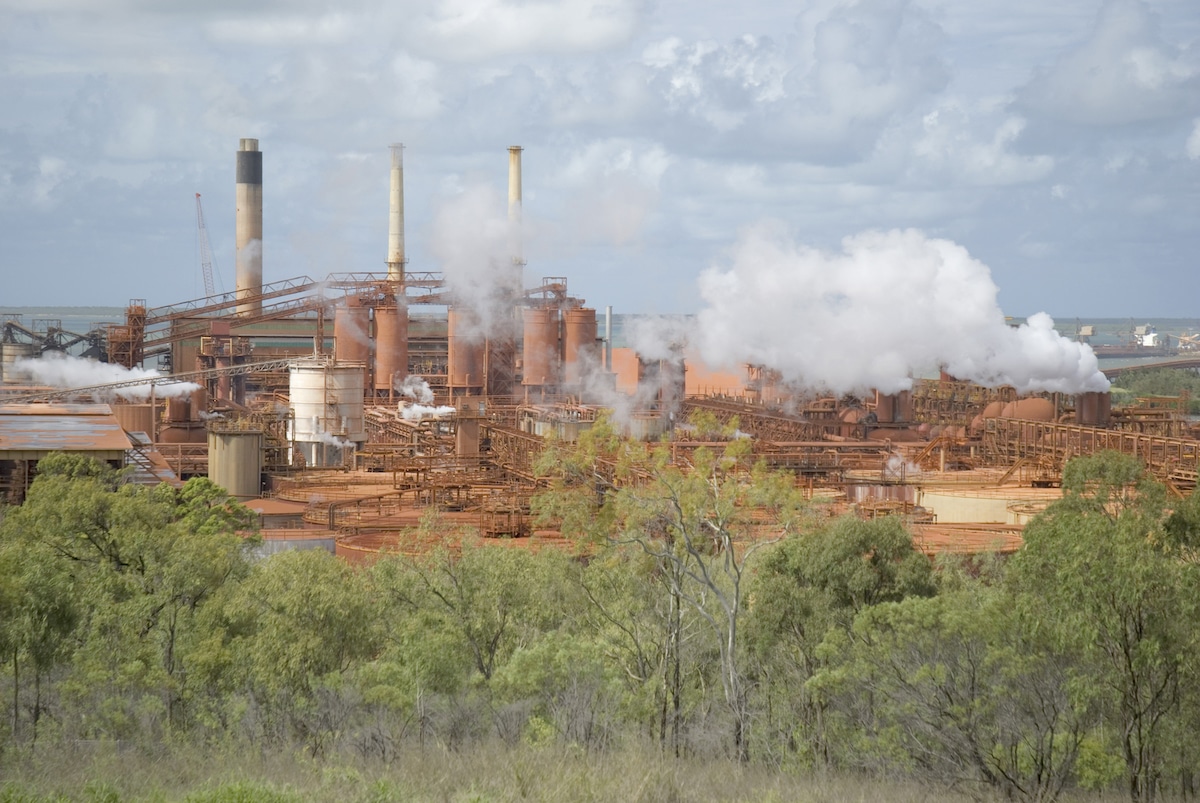How Five of Australia’s Heavy Industry Supply Chains Can Decarbonize by 2050

 Why you can trust us
Why you can trust us
Founded in 2005 as an Ohio-based environmental newspaper, EcoWatch is a digital platform dedicated to publishing quality, science-based content on environmental issues, causes, and solutions.
One major weakness of corporate net-zero plans is that they often rely on carbon offsets that promise more than they deliver.
However, a new report from the Australian Industry Energy Transitions Initiative (ETI) found that five of the country’s high-emission supply chains could achieve net zero emissions by 2050 with minimal use of offsets.
“With strong ambition, coordinated action and government support, industry emissions could be reduced by up to 92 per cent by 2050, based on 2020 levels,” Australian Industry ETI Chair Simon McKeon AO, who is also the chancellor of Monash University, former Commonwealth Scientific and Industrial Research Organisation (CSIRO) chairman and former Australian of the Year, said in a press release. “This, with high quality and verifiable offsets for the remaining 8 per cent, would transition industry to net zero emissions in support of the ambition to limit warming to 1.5ºC.”
The report, “Pathways to Industrial Decarbonization,” was written by the non-profits Climateworks Centre and Climate-KIC with the support of 18 companies that account for around 22 percent of Australia’s industrial emissions and a third of the market value of the ASX100. The final paper was the result of a three-year process that outlines how five major supply chains can decarbonize in line with the Paris agreement goal of limiting global warming to 1.5 degrees Celsius above pre-industrial levels: iron and steel, aluminum, other metals, chemicals, and liquefied natural gas (LNG).
These supply chains account for around 25 percent of Australia’s total emissions, but they also account for more than 17.3 percent of its Gross Domestic Product and provide around 414,000 jobs, according to PV Magazine. However, following through on an ambitious decarbonization plan could actually generate more than 1.3 million jobs between 2025 and 2050, according to the press release.
The report found it would be possible to reduce yearly carbon dioxide emissions from 221 million tonnes in 2020 to 17 million tonnes by 2050 and still enable steel and iron production to increase by almost 20 percent and aluminum production by more than 30 percent, The Guardian reported. LNG production would need to fall to 20 percent of current levels by 2040.
Reaching this goal would not be cheap. It would require spending $20.8 billion per year and upping the ambition of current Australian policy, according to Perth Now. However, ClimateWorks Centre CEO Anna Skarbek said the expense only amounted to a tenth of the supply chains’ annual export value of $236 billion, according to The Guardian.
“The transition is an investment in modernising Australia’s industrial regions and energy system,” she said, as The Guardian reported.
Significantly, the decarbonization pathway would require major leaps in renewable energy, increasing electricity generation by a factor of two by 2050, Australian Renewable Energy Agency CEO Darren Miller said, as Perth Now reported. In total, the report called for 320 gigawatts (GW) of new renewable energy generation and storage capacity by mid-century, broken down into 80 GW of utility-scale wind, 90GW of utility-scale solar, 80 GW of rooftop solar, and 70 GW of storage capacity, as Renew Economy reported.
“This is the biggest change in our economy since the Industrial Revolution, and… we are undertaking it at much greater speed,” Australian Minister for Climate and Energy Chris Bowen said at the report launch Monday, as Renew Economy reported. “Australia is very well placed to lead the world in many ways and to give Australians jobs right across our county, but we have to be all in to do it.”
Subscribe to get exclusive updates in our daily newsletter!
By signing up, you agree to the Terms of Use and Privacy Policy & to receive electronic communications from EcoWatch Media Group, which may include marketing promotions, advertisements and sponsored content.

 233k
233k  41k
41k  Subscribe
Subscribe 




